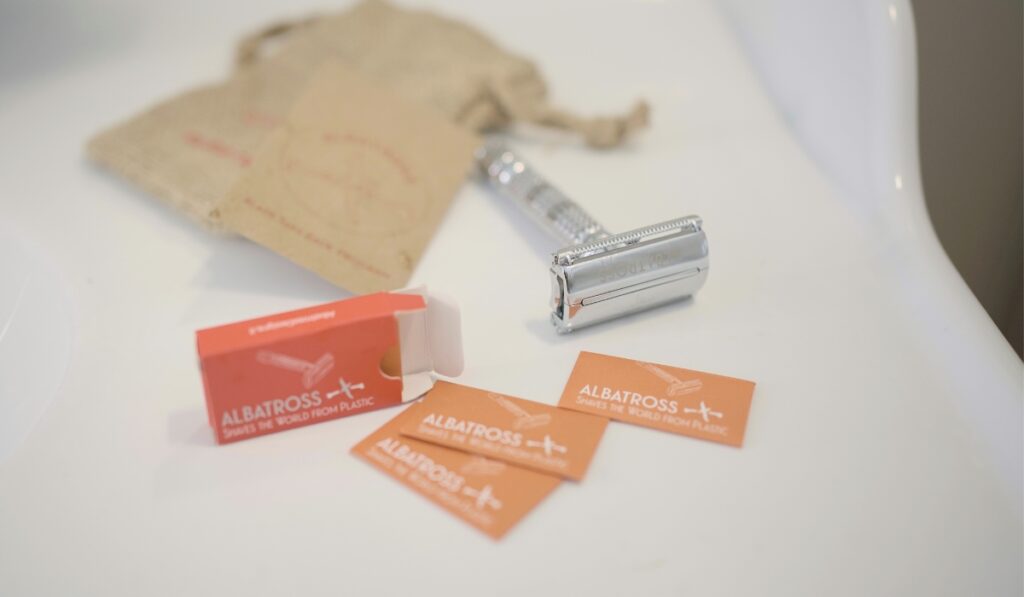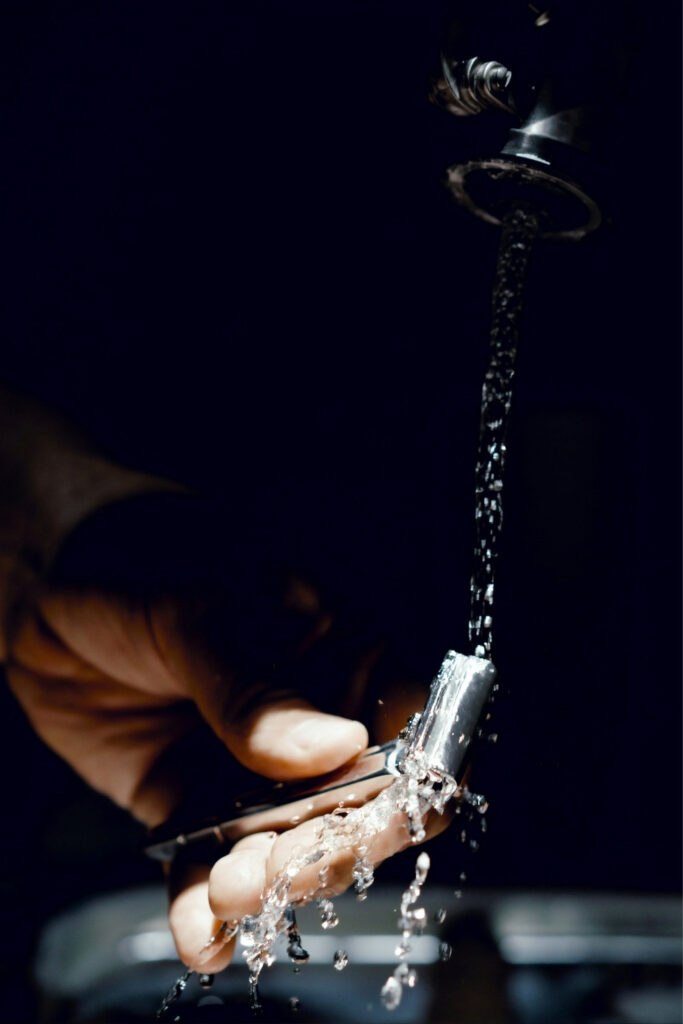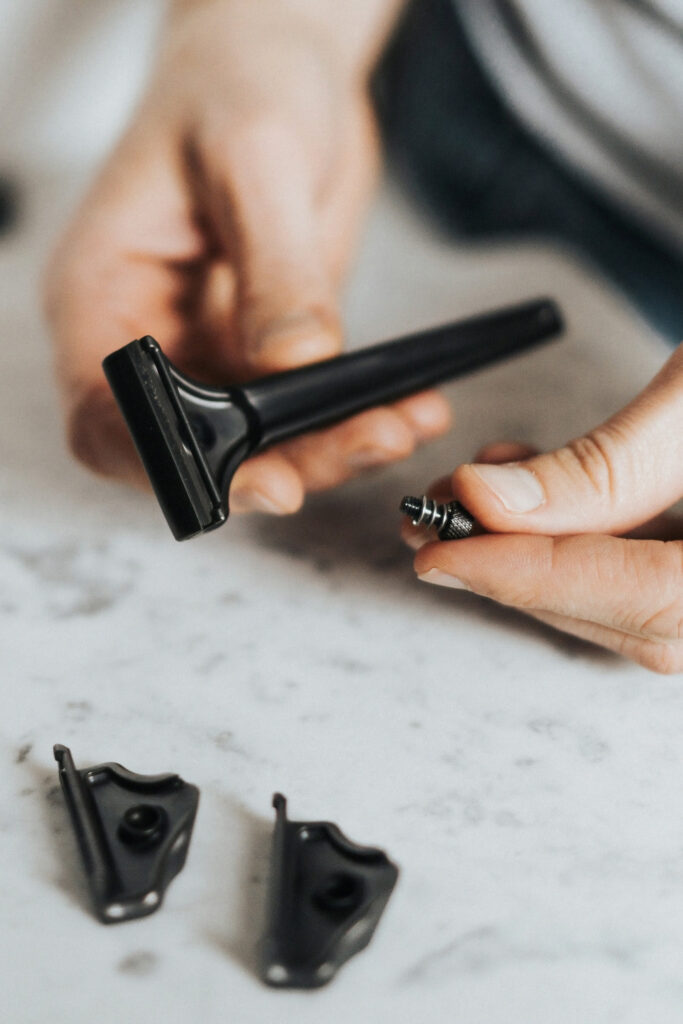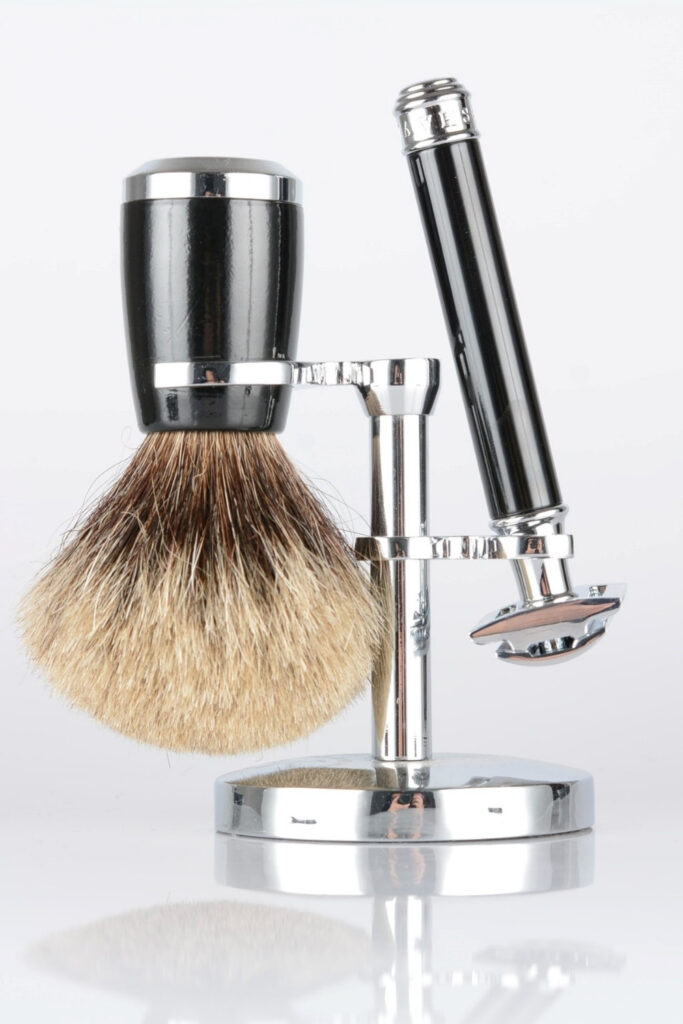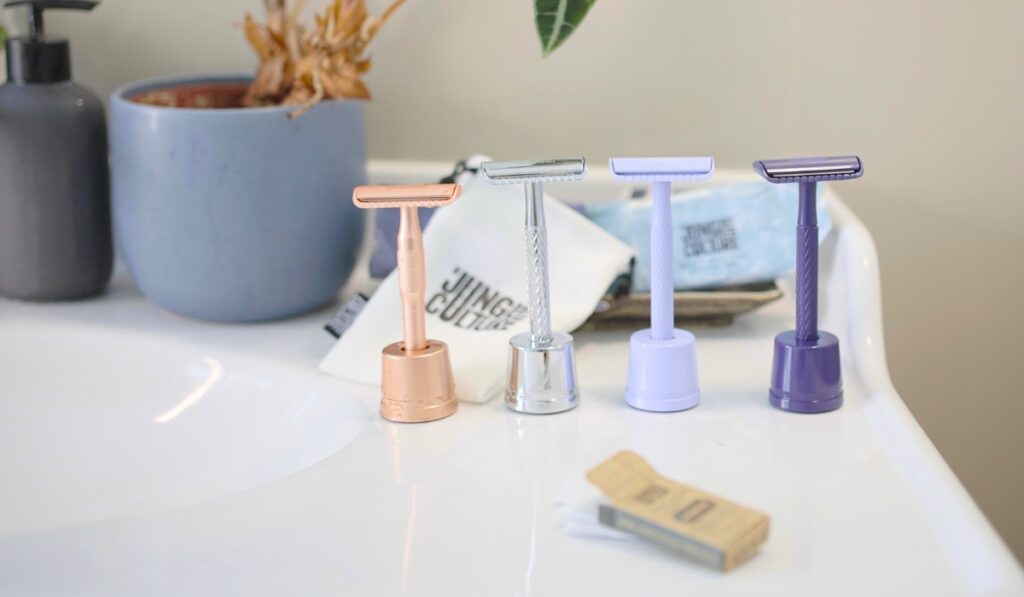So you’ve made the switch to a safety razor?!
Well, to fully reap the benefits of this handy (er, leggy?) zero waste tool, and ensure it lasts you a lifetime, you’ll need to learn how to clean a safety razor.
Part of being a conscious consumer is making sure products last as long as possible, after all.
Fortunately, cleaning a safety razor is just as easy as using one and our top tips will have you covered (and uncovered from hair) in no time.
But before you reach for your zero waste shaving cream or shaving soap bar, read on for the low down on how to keep your safety razor clean.
Not sure what a safety razor is?
Ask your grandparents or pop down to the end of the article where we shave away the mystery of this old-school-cool reusable alternative.
Exploring How To Clean Your Safety Razor
- Why You Should Keep Your Safety Razor Clean Jump to section
- How Often Should You Clean A Safety Razor? Jump to section
- How To Clean Your Safety Razor Jump to section
- How To Maintain Your Safety Razor Jump to section
Why You Should Keep Your Safety Razor Clean
Congratulations, you’ve switched to a safety razor! The next step?
Keep it in tip-top condition so it gives a good shave time and time again.
First things first: can you wash a safety razor?
Absolutely. A regular cleaning routine is important as clean blades equal a closer shave.
What happens if you don’t wash your safety razor?
If you neglect good razor hygiene, you’ll probably find that it gunks up quickly, leading to a coarser, less comfortable shave.
Don’t worry, it’s all fixable and our cleaning tips will get your razor back to its old shiny, and sharp self in no time.
How Often Should You Clean A Safety Razor?
There are two levels when it comes to cleaning a safety razor:
1) The quick, routine cleaning that happens after each use.
2) A weekly to monthly thorough clean. How often you need to do this depends on how often you use your razor, how thoroughly you clean it after each use, and how hard your water is.
If you’re using your razor daily or even every other day, a thorough cleaning once per week is a good idea.
If it’s winter and your legs are lucky to be shaved once every two weeks, a monthly cleaning is more than sufficient.
Bear in mind hard water leads to more mineral build-up so a weekly or biweekly clean might be necessary regardless of frequency of use.
How To Clean Your Safety Razor
1. How to clean a safety razor after use
For a quick after-use clean, simply give your safety razor a thorough rinse in warm water.
Make sure you get rid of all the hairs and soap residue and then dry it on a soft towel (careful not to cut the fluffy fibers of your organic towel!)
2. Give your safety razor a monthly or weekly clean
Even if you’re fairly diligent about rinsing off after each use, safety razors can build up dirt and grease made up of soap residue and dead skin cells, especially in the crevices you can’t see.
If you notice a white, powdery residue starting to appear, it’s likely the start of mineral-build up, signaling time for a more thorough clean.
To do this, fill your sink with hot, soapy water. A zero waste dish soap or castile soap are the most sustainable options.
Take your razor apart. There are two main kinds of safety razor disassembly: standard and butterfly.
On standard razors, the whole head unscrews from the handle giving access to the blades. Be very careful unscrewing these kinds as you can easily cut yourself. Using a towel as a buffer between your hand and the blade is a smart idea.
The process of how to clean a butterfly safety razor is easier and safer, as these open simply by twisting the bottom of the handle so that the head opens much like a butterfly’s wings.
Once your razor is open, remove the blade and check to see if it needs changing. If you’re cleaning on a monthly basis, it’s probably time to replace the blade anyway.
PS: Be sure to recycle the used blades properly. Companies like Albatross offer mail-in blade recycling for those without local scrap metal services.
Back to the razor at hand. Take a clean cotton rag (you can repurpose old clothes for this) to carefully wipe each part with moderate pressure.
You can also repurpose an old eco-friendly toothbrush or toothpicks to get to the harder-to-reach places.
When it’s all clean, give your razor a thorough rinse in warm water and let it dry completely before putting it back together.
3. How to clean the scum off a safety razor
If you follow the tips above you shouldn’t have a scum problem.
However, if it’s been a while since you’ve given your razor a thorough clean, you might be faced with a slightly bigger cleaning challenge.
If hot soapy water and an old toothbrush aren’t enough, a vinegar soak (one part vinegar to four parts water) can be used to dissolve any remaining mineral build-up.
Leave your razor to soak for up to an hour.
Note of warning: Vinegar can corrode metal, so always use a diluted solution, don’t leave your razor in it for too long, and make sure you rinse thoroughly at the end.
4. How to clean rust off a safety razor
But will a safety razor rust?
If cared for correctly, you shouldn’t have any rust issues, and modern razors are often made from rust-resistant chrome.
The biggest concern for safety razor rust are the blades. Not only can this be dangerous if you accidentally nick yourself but rusted blades left attached to the razor may spread the rust.
If you open your razor and spot rust, first recycle the rusty blades.
Then give your safety razor a thorough clean using hot water, detergent, and an old toothbrush.
If it isn’t enough, the next thing to try is the vinegar soak described above.
If all else fails, it’s time to bring out the bicarb, which, when combined with vinegar, is your non-toxic, rust-removing ally.
Make up a 50/50 vinegar and water solution and put your razor in to start soaking. Then add 2-3 tablespoons of bicarbonate of soda. The mixture will fizz and lift away rust.
After an hour, the rust should be wiped away using a soft cloth and as usual, you can use a toothbrush or steel/copper wool to get any stubborn spots that remain.
You can also make a bicarbonate soda paste by mixing a few drops of water into some bicarb powder and putting it on a toothbrush to gently scrub away rust spots. Just make sure you rinse it off once you’re finished.
5. How to clean safety razor blades
The blades are taken care of during your regular quick clean after each shave and typically by the time a more thorough clean rolls around, the blades are on their way out.
We don’t recommend any further blade cleaning as it’s a risky business.
As long as you clean and properly store your razor after each use (more on this below), the blades should last until they’re too blunt to work.
How long should a safety razor blade last?
There are a few factors that influence this such as the quality of the blades, how coarse your hair is, how much hair you’re shaving off in one go, and how you’re storing your blades.
On average a safety razor blade lasts at optimum sharpness for between 5-7 shaves.
6. How to clean old, used, or vintage safety razors
If you’re wondering how to clean a used safety razor, or how to clean a vintage safety razor that’s been used before you, the methods are generally the same as the ones outlined above.
However, if you want to add some extra sanitation before use, there are a few options:
- Put the razor through the dishwasher for a thorough clean.
- Steam/boil the razor. You need to do this in a way that the razor doesn’t come into contact with the hot bottom of the pan to avoid damaging the metal. The easiest way is to put it in a colander that fits inside the pan.
- You can also use a disinfectant solution, like rubbing alcohol, white vinegar, or hydrogen peroxide, followed by a thorough rinse.
Vintage razors often require extra care and it’s important to know what material your razor is made of so that you don’t use any products or tools that might damage it.
Instructions for how to clean a chrome safety razor differ from those for cleaning a silver or gold-plated razor, for example.
Here’s a video with plenty of info on cleaning and restoring vintage razors.
We’re not too sure about the eco-friendliness of some of the products they recommend and would suggest opting for an eco-friendly metal polish or polishing cloth for a sustainable shine.
How To Maintain Your Safety Razor
How to Use A Safety Razor to Minimize Cleaning
When using your razor, give it a quick rinse after each stroke to prevent soap and scum build-up.
After your shave, give your razor a thorough rinse to remove any residues. This should be enough to keep frequent deep cleaning to a minimum.
To reduce the need for a more thorough cleaning, some people take their razor apart every 2-3 uses to give a quick wipe with a soft, dry cloth to remove any build-up.
How to Store A Safety Razor to Minimize Cleaning
The most important thing you can do to care for your safety razor is to store it properly. It’s important to keep safety razors in a clean and dry environment to prevent rusting.
Don’t leave it in the shower or beside the bath.
Rinse and dry your razor thoroughly after use, then store it standing upright. An upcycled jar works well but a well-ventilated razor stand can help to keep your razor dry.
What Is A Safety Razor?
These metal razors have been around for a long time and there’s a sizeable market for them, which is a testament to their durability.
Safety razors like these women’s reusable razors (also known as double-edge razors or DE’s for short) are plastic-free, all-metal razors. They’re usually made from stainless steel or chrome, though you can find fancier materials like rose gold.
With a safety razor, you swap out the old blade for a new one, but the handle and head remain in use indefinitely.
In the past, safety razors were the razors. Nowadays, they have those plastic sticks to contend with which are.the.worst.
An estimated 2 billion razors are thrown away in the US every year. Considering plastic takes up to 1000 years to degrade, that’s a serious amount of plastic waste sitting in landfills for the sake of smooth legs.
Ditching the disposables in favor of a safety razor is a simple change that shaves off some of the enormous amounts of plastic waste.
Thankfully, safety razors are making a comeback. Not only are they a good move for the planet, but given how spendy disposables are over time, they’re good for your sustainable wallet too.



